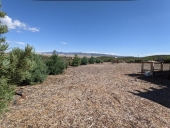




 1
1




 2
2




 1
1




 1
1




Standing on the shoulders of giants. Giants with dirt under their nails
 1
1




“All good things are wild, and free.” Henry David Thoreau
 3
3




It's never too late to start! I retired to homestead on the slopes of Mauna Loa, an active volcano. I relate snippets of my endeavor on my blog : www.kaufarmer.blogspot.com
 2
2








Standing on the shoulders of giants. Giants with dirt under their nails
 1
1




"The rule of no realm is mine. But all worthy things that are in peril as the world now stands, these are my care. And for my part, I shall not wholly fail in my task if anything that passes through this night can still grow fairer or bear fruit and flower again in days to come. For I too am a steward. Did you not know?" Gandolf
 3
3





 1
1





|
There are 29 Knuts in one Sickle, and 17 Sickles make up a Galleon. 42 tiny ads in a knut:
Rocket Mass Heater Resources Wiki
https://permies.com/w/rmh-resources
|







